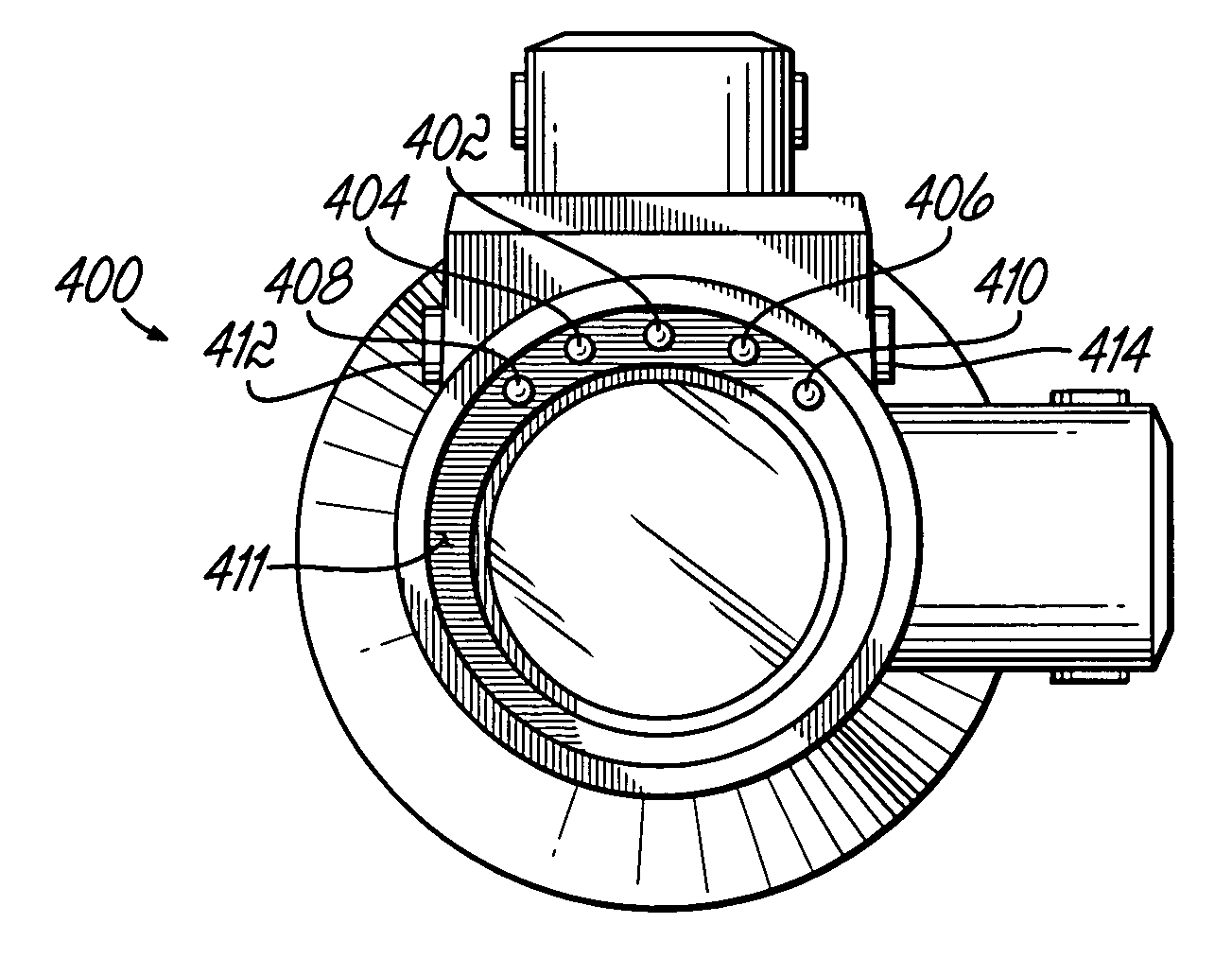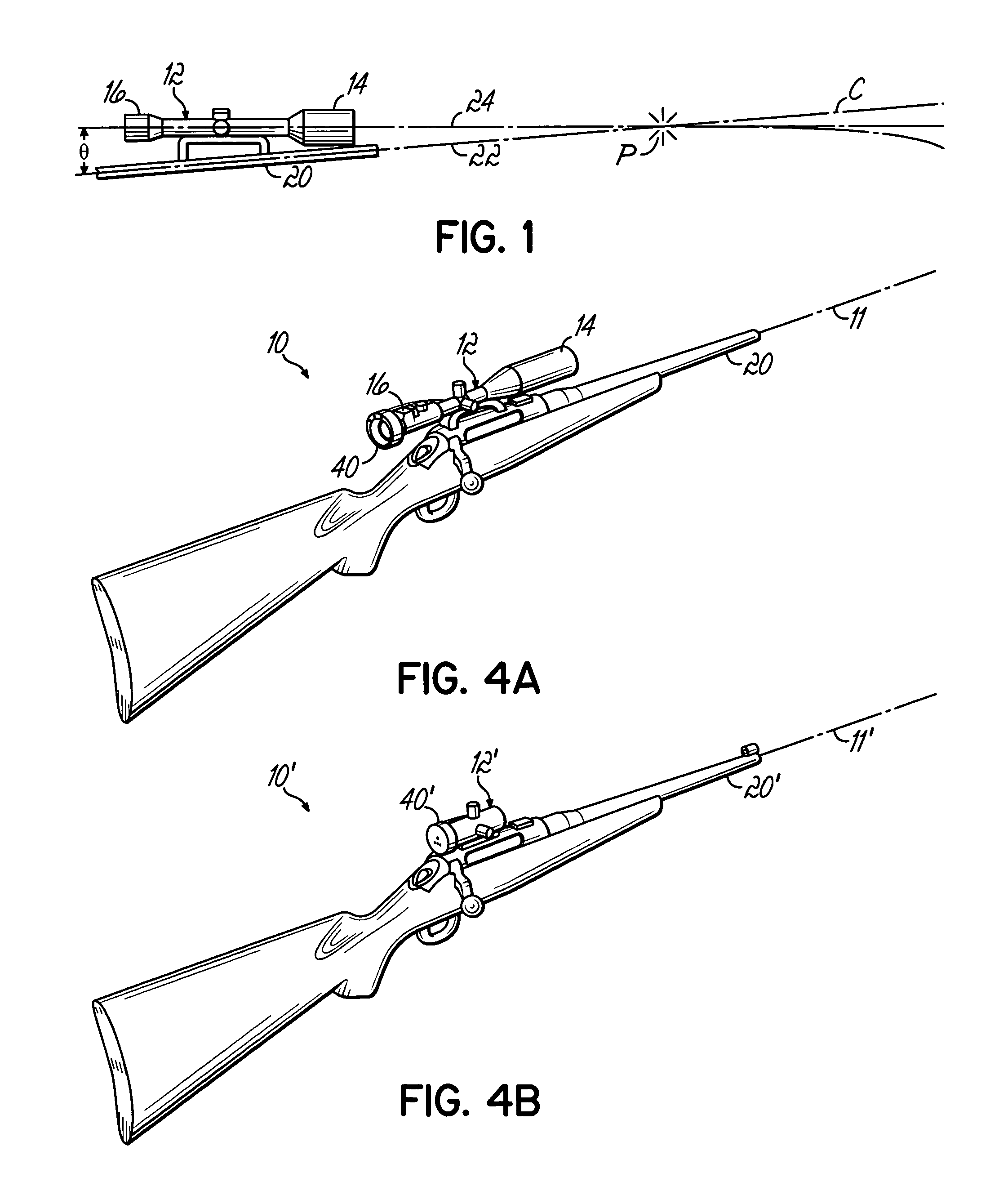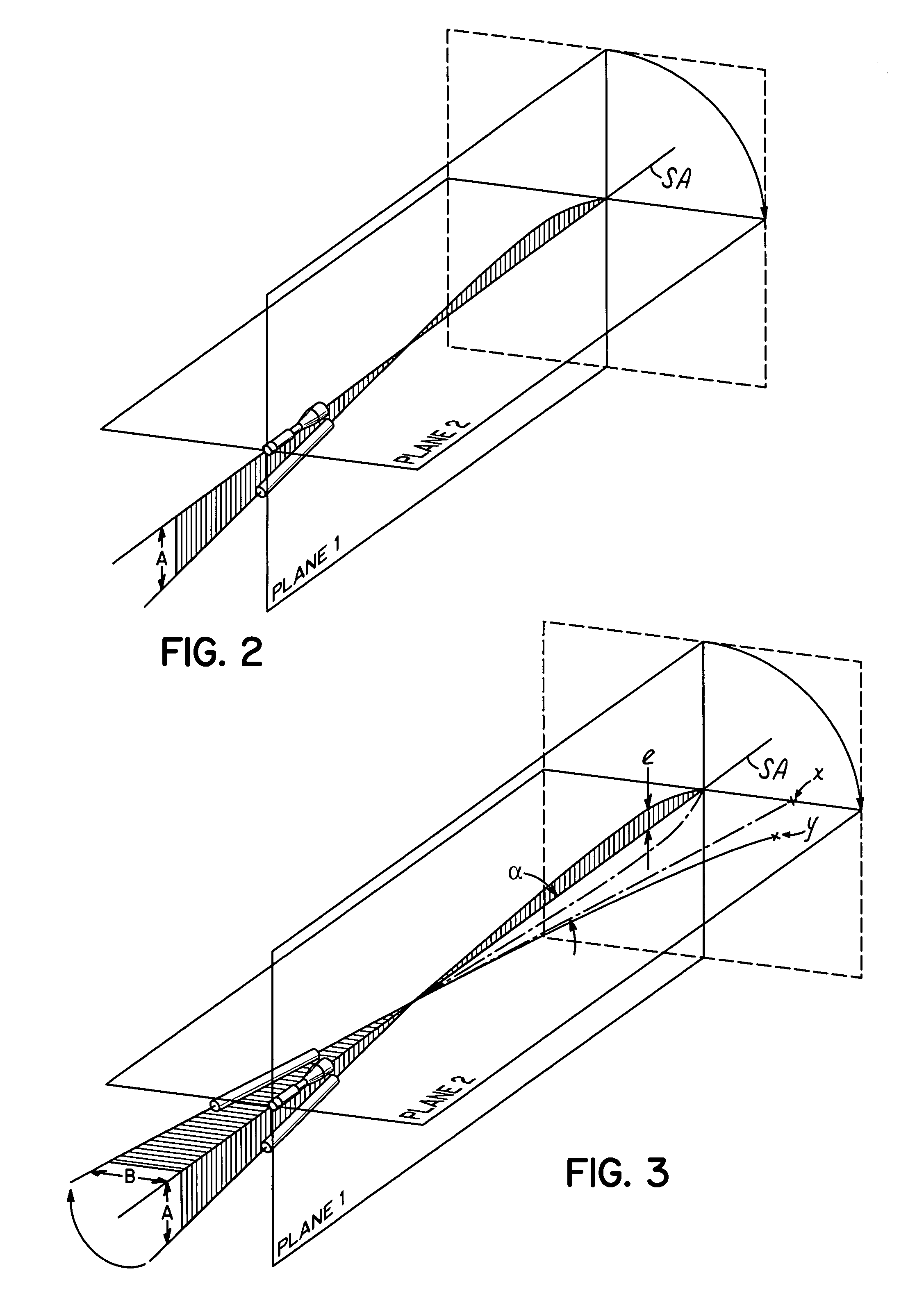Tilt indicator for firearms
a tilt indicator and firearm technology, applied in the field of firearm control and aiming, can solve the problems of insufficient unaided aiming of firearms, source of inaccuracy, and become so clos
- Summary
- Abstract
- Description
- Claims
- Application Information
AI Technical Summary
Benefits of technology
Problems solved by technology
Method used
Image
Examples
embodiment
Accelerometer Embodiment
[0120]Referring to FIGS. 28–31, another embodiment interfaces an accelerometer 512 with a controller 514 and signal indicators 402–410 to unobtrusively communicate tilt information to a user of a scope 600 or other sighting device. Generally, the ocular housing of the tilt indicator 400 illustrated in FIG. 29 employs the accelerometer 512 and other tilt sensing circuitry to convey orientation information to the user via at least one signal indicator. As shown in FIG. 29, the peripheral positioning of the signal indicator(s) 402–410 ensures they do not obstruct visual target acquisition when removably attached to a rifle scope 600, as shown in FIG. 28. As may be appreciated, the battery operated tilt indicator 400 is configured to mount onto a scope housing 600 of FIG. 28 with the signal indicators 402–410 (FIG. 29) recessed on an annular ring 411 and oriented in any suitable fashion. Tilt indicator 400 is preferably positioned behind all optical elements or o...
PUM
 Login to View More
Login to View More Abstract
Description
Claims
Application Information
 Login to View More
Login to View More - R&D
- Intellectual Property
- Life Sciences
- Materials
- Tech Scout
- Unparalleled Data Quality
- Higher Quality Content
- 60% Fewer Hallucinations
Browse by: Latest US Patents, China's latest patents, Technical Efficacy Thesaurus, Application Domain, Technology Topic, Popular Technical Reports.
© 2025 PatSnap. All rights reserved.Legal|Privacy policy|Modern Slavery Act Transparency Statement|Sitemap|About US| Contact US: help@patsnap.com



